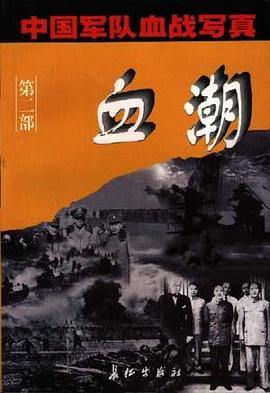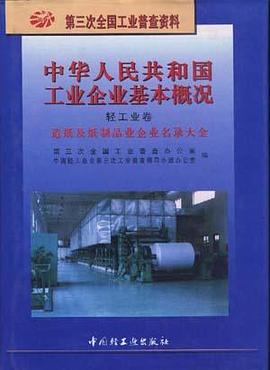Chapter 1 Getting Started
Congratulations!
CClE: An Overvlew
What Background Do l Need to Become a CClE?
Steps in Becoming a CClE
CClE Routlng and Switching Expert
The Tests for CClE Routing and Switchlng Expert
CClEWAN Switohing Expert
TheTests for CClEWAN Swltchlng Expert
CClE ISP Dial Expert
TheTests for CClE ISP Dial Expert
Recertlficatlon for CClEs
Gaining the Necessary CiscoTraining
Getting the Most from Your Training by Developing Good StI
What's Behlnd Certlflcation Requirements?
Reglsterlng for the Exam
Tips forTaking the Exams
StandardTesting Technique
WhattoDolfYouFail
Conclusion
Chapter 2 Data Link Layer-MAC Layer Issues
Data Link Layer Addressing
Data Llnk Frames
MAC Addressing
FDDl Addressing
Bit OrderTransmlssion
Ethernet Archltecture
Ethernet Definition
Ethernet Transmission
Ethernet Reception
Full-Duplex Ethernet
lEEE 802.2 Data Link Service
Summary of Ethernet Frame Formations and Descriptions
lEEE 802.3 Frame Format
lEEE 802.3 SNAP Frame Format
802.3 Raw Novell Proprietary Frame Format
802.2 LLC Header
Addressing Schemes
Fast Ethernet
Media Access Control Layer
Media Independent Interface Layer
lOOBASE-TX Physical Layer
100BASE-T4 Physical Layer
lOOBASE-FX Physical Layer
Wlring Standard
Network Diameter
Repeater Classes
Ethernet Vendor Addresses
Token Ring Architecture
Token Ring Operation
Token Ring Frame Definitions
Token Format
Token Rlng Addressing
Token Ring Functions
Token Ring Initiallzation
Starting the Ring: The Token Claim Process
Operation
Frame Transmission
Frame Reception
Normal Repeat Mode
EarlyToken Release
Fault Isolation and Software Error Reporting
Token Ring Monitors: Malntalnlng the Rlng
FDDl Architecture
Baslc FDDl Characteristics
FDDl Timers and Frame Formats
Connection Establishment
Ring Initialization
Neighbor Notification and Duplicate Address Check
Normal Operation
FDDl Management
Summary
Address Summary
Token Ring Architecture Summary
FDDl Architecture Summary
Data Link Layer Study Questions
Chapter 3 Logical Link Control Layer Issues
MAC and LLC Layers
LLC Type 2 Operation
Connection-Oriented LLC2-Asynchronous Balance Mode
Frame Formats
SAP Addressing
Sequencing of Data (LLC2)
Timer Functions
Connection-Oriented Services of the lEEE 802.2 Protocol
Details of LLC Type 2 Operation
LLC2 Frame Receptton
A Live Connectlon
LLCType 1 Operatlon
Informatlon Transfer
SNAP
Logical Link Control Layer Study Questlons
Bridging and LAN Swltchlng
Bridging Advantages
How Bridges Work
MAC Bridge Frame Formats .
Transparent Brldglng
Spannlng Tree Algorithm
How STB Works
Shaping the Spanning Tree
Clsco Transparent Brldglng Features
Source-Route Brldglng (SRB)
How Source Routing Works
Source Route Trafflc Overhead
Parallel Brldges and Load Balanclng
Route Determination
Cisco Source Route Bridglng
Source Route Brldglng Features
Remote Source-Route Brldglng
DLSw+
SRB Summary
Source Route Transparent
The SRT Solution
SRT BRlDGlNG
About SRT
Source-Route Transparent Bridging Features
Translational and Encapsulation Brldging
Translational Bridging
Encapsulation Bridglng
Translation from Token Ring Frames to Ethernet
Translation from Ethernet Frames to Token Rlng
Bridging Study Questions
Transparent Bridging
Source-Routing Bridging
Source Route Transparent
Other Reference Materials
NetBlOS Architecture
NetBlOS Names
What Are NetBlOS Services?
NetBlOS General Service Commands
Naming Services
What Is a NetBIOS Session?
NetBIOS Datagram Services
NBF and Sessions
NetBEUI and the OSI Model
LLC Sublayer
Connectionless Trafflc
Connection-Oriented Traffic
Adaptlve Slidlng Window Protocol
LinkTimers
NetBIOS Session Tlmers
NetBEUI on a Multisegmented Token Ring LAN
Cisco NetBIOS support
NetBIOS Name Caching
NetBIOS BroadcastThrottling
NetBIOS Broadcast Damplng
NetBIOS Datagram Broadcast Handllng
Broadcast Reduction
Name Caching
NetBIOS Cache Aging
Statically Conflgured NetBIOS Names
NetBIOS Study Questions
lapter 6 Working with AppleTalk
Cisco Systems AppleTalk Routing
Data Link and Physical Layers
Llnk-Access Protocols
Data Links
AppleTalk Address Resolution Protocol (AARP)
AppleTalk AARP Addressing
Network Layer
DDP Protocol Packet Layout
What Is an AppleTalk Network Number?
AppleTalk Phase 1 Architecture
AppleTalk Phase 2 Architecture
Integrating AppleTalk Phase 1 and 2
Transport Layer
Routing Table Maintenance Protocol
AppleTalk Update-Based Routing Protocol
Name Binding Protocol Header Descriptions
What Is an AppleTalk Zone?
Zone Informatlon Protocol
ASP Session Protocol
Printer Access Protocol (PAP)
Presentation Layer Protocols
AppleTalk Filing Protocol
Cisco Enhancements to Standard AppleTalk Services
Security
AppleTalk CCIE Study Questions
Chapter 7 Working With Novell NetWare
Building the Directory Framework
Directory Loglcal Structure
MAC
ATM
MAC Header
Data Link Frames and Frame Types
FDDl SNAP
NetWare Layer 3 Support
IPX Addressing
Host Number
Network Number
Socket Number
Checksum
Length
Transport Control
PacketType
Destlnatlon Network
Destination Host Node
Destinatlon Socket
Source Network
Source Node
Source Socket
Novell IPX Routing Information Protocol (RlP)
Distance-Vector Algorithms
Clsco lOS IPX RoutingTable
Client and Router Interaction
IPX RlP Interval
Multiple Routes
IPX and Spllt Horizon
IPX Static Routing
Configurable RlP Tlmers
Novell Burst Mode Architecture
Novell Burst Mode Sequence Number
NLSP: A Link-State Routlng Protocol
Llnk-State Databases
NLSP Addressing
NLSP Advantages
Level 1 LSP
NLSP Management Information
Link-State Information
Servlces Information
External Routes Header
IPX Level l Hello Packet
CSNP Header
Service Advertising Protocol
SAP Header Format and Fields
Cisco Static SAP Tables
Clsco Conflgurable SAP Timers
Servlce Advertising Protocol
IPX SAP Interval
SPX Architecture
Large Packets
SPX Packet Format
SPX Header Description
SPX Acknowledgment Packets
SPX Connectlon Management Packets
Connection Management
Sesslon Termination
SPXWatehdog Algorithm
Sesslon Watchdog during Connection Establishment
Windowing Algorithm
Managlng Sequence and Acknowledge Numbers
Acknowledgments
Extensive Error-Recovery Mechanlsms
Data Packet Timeout
Window Slze
Congestlon Control Algorithm
NetWare Core Protocol
NCP Header Descrlptions
NCP Functlon Codes
NetBlOS over IPX
IPXVersion l.O
Connection Establishment
The Shell Program
IPX Protocol Deslgn Worksheet
Novell IPX PROTOCOLWORKSHEET
Novell IPX RlPWORKSHEET
Novell SAPWORKSHEET
Novell IPX WAN DESlGN WORKSHEET
NOVELL NLSP DESlGN WORKSHEET
Novell CClE Study Questions
Chapter 8 TCP/lP Architecture Overview
Internet Protocol (IP)
IP Datagrams
IP Addresses
Address Classes
Summary of IP Address Classes
Classless InterDomain Routing (ClDR)
Subnetting
Variable Length Subnet Masks (VLSM)
IP Addressing and Subnetting Exercises
ARP Architecture
ARP: Frame Encapsulation
ARP: Header Format
Proxy ARP
Reverse ARP
ARP Features
OHCP Protocol Architecture
DHCP Scopes
DHCP Relay.
Conflguratlon Parameters
Network Address Allocatlon
Client-Server Protocol
Constructlng and Sendlng DHCP Messages
DHCP Server Controls
DHCP Server Behavlor
DHCP Cllent Behavlor
Appllcatlons and Beneflts
Managlng DNS
DHCP in a Swltohed Network
TCP/lP Networks Easler to Conflgure
Internet Control Message Protocol (lCMP)
lCMP Encapsulation
lCMP Header Format
Echo Request (Type 8) or Echo Reply Message (Type 0)
IP Flelds
Destination Unreachable Message
Souroe Quench Message
lCMP Flelds
Redirect Message
IPFlelds
lCMP Fields
Tlme Exceeded Message
IP Fields
lCMP Fields
Parameter Problem Message
IP Flelds
lCMP Fields
Tlmestamp Request orTimeIstamp Reply Message
IP Fields
ICMP Fields
Informatlon Request or Informatlon Reply Message
IP Flelds
lCMP Fields
Address Mask Request or Address Mask Reply Message
TCP Protocol Overview
Full-Duplex Operation
Sequence Numbers
Window Size and Bufferlng
Round-Trlp Time Estimatlon
Header Format
Sequence Numbers
Initlal Sequence Number Selection
Establishing a connection
The Communication of Urgent Information
Managlng the Wlndow
User Datagram Protocol (UDP)
UDP and the ISO Model
UDP Header Encapsulation
NetBlOSoverTCP/lP
Interface to Application Programs
NetBlOS Scope
NetBlOS End-Nodes
NetBlOS Support Servers
NetBlOS Name Server (NBNS) Nodes
Relationship of NetBlOS Support Servers and B Nodes
Topologies
Retransmisslon of Requests
Requests without Responses: Demands
Transaction ID
TCP and UDP Foundatlons
Representation of NetBlOS Names
First Level Encoding
Second Level Encoding
NetBlOS Name Service
Name Registration (Claim)
Narne Query (Discovery)
Name Release
Explicit Release
NetBlOS Session Service
Overview of NetBlOS Session Service
Session Establishment Phase Overview
NetBlOS Datagram Service
NetBlOS Datagrams by B Nodes
NetBlOS Datagrams by P and M Nodes
Cisco's TCP/IP Optlons
Access Restrictions
Multivendor Tunneling
IP Multicast Support
Routing Protocol Update Suppression
Administrative Distance
Routing Protocol Redistribution
Serverless Network Support
Network Monitoring and Debugging
Summary
TCP/lP CClE Study Questions
ter 9 Routing Information Protocol (RlP)
RlP Limitations
Split Horizon
Triggered Updates
Route States
UP
GARBAGE COLLECTlON
Hold-Down
RlPvl Commands
Addressing Considerations
RlPTimers
RlP Header Format and Fields
RlP Summary
Route Tag
Subnet Mask
Next Hop
Queries
Authentlcation
Larger Infinity
Securlty Conslderations
When Should l Choose RlPvl over RlPv2?
TCP/lP RlP Routing Protocol
Design Checkllst
RlP Study Questions
Chapter lO Interior Gateway Routing Protocol and Enhanced IGRP
IGRP
Stability Features
Timers
IGRP Header Format Description
Enhanced IGRP
PacketTypes
NelghborTables
Topology Tables
Route States
Route Tagglng
Compatlblllty wlth IGRP
Clsco IGRP Deslgri Worksheet
IGRP ElGRP Study Questions
Chapter l l Open Shortest Path First
The Shortest-Path Tree
OSPF Topology
Area Partitioning
OSPF Router Classes
OSPF Network Support
Virtual Links
Hierarchical Routing
Stub Areas
OSPF Concepts
Nelghbors
Designated Router
Adjacency
Flooding
Dijkstra Algorithm
Routing Protocol Packets
OSPF Message Header
The Hello Protocol
Designated Router
Electing the DR
Oatabase Descrlptlon Packets
Llnk State Request Packets
Llnk State Update Packets
Router Link State Advertlsements
Network LSAs
Summary LSAs
Autonomous System External LSAs
OSPF Routing Protocol Deslgn Worksheet
OSPF Study Questions
Chapter 12 Border Gateway Protocol
How BGP Works
Routes: Advertisement and Storage
Routing Information Bases
Operatlonal Features
BGP Message Header Format
OPEN Message Fprmat
UPDATE Message Format
KEEPALlVE Message Format
NOTlFlCATlON Message Format
BGP Error Handling
Connection colllslon detection
BGP Version Negotlation
BGP Flnlte State Machine
Decision Process
Breaklng Tles (Phase 2)
Phase 3; Route Dissemination
Overlapplng Routes
Update-Send Process
Internal Updates
Breaking Tles (Internal Updates)
External Updates
Origlnating BGP routes
BGP CClE Study Questions
Chapter 13 Data Link Switchlng (DLSw)
Background
Objectlve of DLSw
Common Method for Transport of SNA over TCP/lP
Overview of DLSw
Transport Connection
Address Parameters
DLSw Operatlons
Correlators
MessageTypes
DLSw State Machine
Explorer Trafflc
Largest Frame Slze Fleld
Capabillties Exchange Formats/Protocol
Control Vector ID Range
Control Vector Order and Continulty
Initial Capablllties Exchange
Run-Tlme Capabilitles Exchange
Capabllltles Exchange Flltering Responslbllitles
DLSw Capabilities Exchange Structured Subflelds
Vendor ID (0x81) Control Vector
DLSw Version (0x82) Control Vector
Inltial Paclng Window (0x83) Control Vector
Verslon String (0384) Control Vector
MAC Address Excluslvlty (0385) Control Vector
SAP Llst Support (0386) Control Vector
TCP Connectlons (0387) Control Vector
NetBlOS Name Excluslvlty (0388) Control Vector
MAC Address List (0389) Control Vector
NetBlOS Name Llst (038A) Control Vector
Vendor Context (038B) Control Vector
Capablllties Exchange Responses
Flow and Congestion Control
Clsco DLSw Implementations
Standard Data Llnk Swltchlng
Cisco DLSW+ Enhancements
Port/Rlng Lists
Peer Group Concept
Prlorltlzatlon
Summary
SNA, DLSw, Stun, SDLLC, and ClP Study Questions
Chapter 14 ATM Architecture
ATM Beneflts
User-Network Interface Configuration
User-Network tnterface Protocol Architecture
Physical Layer
The SONET Physlcal Layer
DS3 Physlcal Layer
Other Physlcal Layers
Rate Decoupllng
ATM Layerand ATM Cells
ATM CellHeader
GFC
vpvvci
PT
CLP
HEC
ATM Cell Information Field
AAL Service Attributes Classified
AAL Protocol Structure Defined
ATM Adaptation Layer
AAL1 Constant Bit Rate (CBR) Servlces
AAL 2: Variable Bit Rate (VBR?Timing Sensltive Servlces
AAL3/4
AAL5: Simple and Efficient Adaptations Layer
Control Plane Overview
Layer Management
Management Plane
Signaling and Routing in the Control Plane
Use of Signaling Protocols
Control Plane Addressing and Routing Defined
ATM Layer Addressing
ATM Signaling and Addressing
Private Networks
NSAP-Based Address Format
Signaling AAL
User-Network Interface Signaling
Signaling ATM Adaptatlon Layer
Signaling Virtual Channel
Signaling Setup Description
Signaling Messages and Information Elements
Signaling Procedures
ATM Connection Setup
Sending Data to Multiple Receivers
Multiplexlng among Different ATM Connectlons
Generlc Functions
QoS, Network Performance, and Cell Loss Prlority
ATM Quallty of Service
ATM Service Categories
ATM Traffic Management
Permanent Virtual Connectlons
Swltched Virtual Connections
Connectlon Admlsslon Control
Routing
VBR/ABR Bandwidth
Cell Loss Priority
Trafflc Shaping
Trafflc Policing
Congestlon Control
ABRTraffic
UBRTraffic
Network-Node Interface Signaling
ATM Forum Interlm Interswltch Signallng Protocol
ATM Forum's Routing Protocol PNNl
Archltecture
PNNl Introductlon
Network Addresslng Phllosophy
PNNl Protocol Between Switohes
PNNl Routing Hierarchy and Topology Aggregation
PNNl Hello Protocol
Database Synchronlzatlon
PNNl Topology Descrlptlon and Dlstrlbution
Supported Metrlcs and Attrlbutes
References
ARP 1577
Accommodatlng IP wlth ATM ARP
ATMARP and InATMARP Packet Format
RFC 1577 Cllent Connectlon Setup
LAN Emulatlon Overvlew
LAN-Speclflc Characterlstics To Be Emulated
Emulated LANs
Architectural Overview
Basic Concepts
Arohitectural Perspectlve
Layer Interfaces
LAN Emulation User to Network Interface (LUNl)
LAN Emulatlon Components
Data Connections
Emulated LAN Functions
Inltlalizatlon
Initial State
LECS Connect Phase
Configuration Phase
Joln Phase
Inltlal Reglstratlon
Connecting to the BUS
Initlalization Phases, Recovery, and Termination
Reglstration
Address Resolutlon
LANE Connection Management
LAN Emulation Frame Formats
Data Frame
Encoding of Ethernet/lEEE 802.3 Type/Length Fields
LE Control Frames
Initlal State-LANE Servlce Architecture
LECS Connect Phase
Flnding at Least One LECS
Conflguration Phase
Configure Request
Conflguratlon-LE Servlce View
Configuratlon Response Frame-Parameter Encodlngs
Configuratlon Frames
Configuratlon Response Frame-Parameter Encodings
Joln Phase
Join Frames
Connecting to the BUS Protocol and Procedures
LANE Registratlon Process
LANE Address Resolution Protocol
Local Management Directlves
Address Resolutlon Frames
Flush Message Protocol, Procedures, and Frame Formats
Flush Message Protocol and Procedures
Optlonal Protocol
Flush Frames
Usage of ATM Addresses
LE Conflguratlon Server ATM Addresses
LANE Client Setup Example
Finding the LECS
Joinlng an Emulated LAN
ATM Study Questions
ATM Show Commands
Chapter l 5 Wide Area Networking
Frame Relay Architecture
Reduced Internetworklng Costs
Increased Performance with Reduced Network Complexlty
Increased Interoperability via Internatlonal Standards
How Frame Relay Works
Inverse Address Resolution Protocol
Elements of Frame Relay
Frame Relay and the OSl Model
Levels of Frame Relay
Frame Relay Network
Local Management Interface (LMl)
Bandwldth on Demand
Cisco's Implementatlon of Frame Relay
X.25 Module
PACKET SWlTCHlNG
X.25 LEVELS
Physical Level
X.21 Digital Interface
X.25 Data Llnk Layer Operatlons
Hlgh-Level Data Link Control
X.25's Llnk Access Procedure-Balanced
Satellite Servlce and Modulo 128
Configurable Network Parameters
Flag Fleld
Address Field
Control Fleld
Information Fleld
FCS
Packet Level
Non-X.25 Devlces
Packet Assemblers/DIsassemblers (PADS)
X.25 Protocols
Dlal X.25 (Recommendatlon X.32)
X.25 Internetworking (Recommendatlon X.75)
Vlrtual Circuits and Loglcal Channels
Packet Formats
Identlfylng Types of Packets
The MaJor Categories of x.25 Packets
Call Refusals
Data Transfers in VIrtual Calls
Call Colllslon and Resolutlon
Interruption wlthout Call Clearlng
Terminating a Vlrtual Call
Packet Layer Flow Control
Control Packets for Abnormal Condltions
Diagnostic Packets and Unrecoverable Errors
Network LayerTimers
Packet Layer State Diagrams
X.25 States, Error Handling, and the Frame Relay Approach
X.25 Virtual Interfaces
Connection-Mode Network Service
Quallfled Logical Link Control Support
Defense Data Network and Blacker Front End X..25
ISDN Architecture
Servlce Types
ISDN and the OSI Reference Model
Cisco's Implementatlon
Functional Devices and Reference Polnts
ISDN Functional Devices
ISDN Reference Points
Layer 2 of ISDN
Network Level-Signal Protocol (Layer 3)
Layer 3 of ISDN(Q.931)
Network Layer Message Format
Example of an ISDN Call
ISDN Applications
Prlmary Line Backup
Dial on Demand
Telecommuting
ISDN Features
ISDN Security
Frame Relay Study Questlons
X.25 Study Questions
ISDN CCIE Study Questions
Answer Key
Chapter
Chapter
Chapter
Chapter
Chapter
Chapter
Chapter
Chapter
Chapter
Chapter
Chapter
Chapter
Chapter
Chapter
Appendlx A
Appendix B
References
Index
· · · · · · (
收起)






















